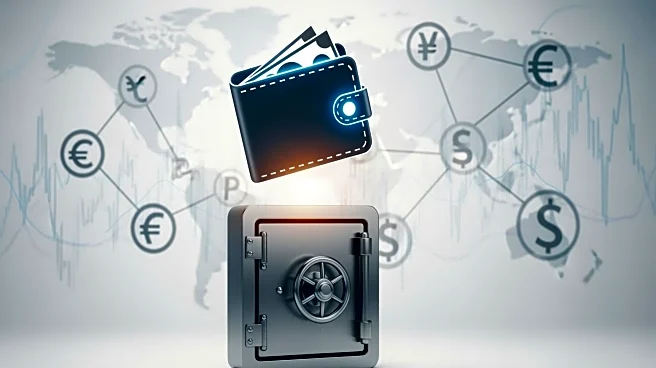What's Happening?
Traditional banks in the Asia Pacific region are experiencing increased competition from fintech innovations, which are expanding financial access to underserved segments such as gig workers and rural
small businesses. Despite the high penetration of traditional bank accounts in countries like Thailand, fintech companies are redefining financial inclusion by offering digital banking solutions. In the Philippines, digital banks and mobile wallets are bridging the gap for the unbanked population, with services like GCash serving over 81 million users. The region is witnessing a surge in the adoption of Buy Now, Pay Later (BNPL) services, with countries like the Philippines and Australia leading in usage rates.
Why It's Important?
The rise of fintech in the Asia Pacific region is significant as it challenges the traditional banking sector and promotes financial inclusion. By targeting underserved populations, fintech companies are providing access to financial services that were previously unavailable to many. This shift not only democratizes financial access but also pressures traditional banks to innovate and improve their services. The increased competition could lead to better customer experiences and more tailored financial products. Additionally, the widespread adoption of digital payment systems and BNPL services indicates a shift towards cashless economies, which could have long-term economic implications.
What's Next?
As fintech continues to grow, traditional banks may need to adapt by forming partnerships with fintech companies or developing their own digital solutions to remain competitive. Regulatory bodies in the region are likely to continue supporting fintech innovations, which could lead to more digital-first banks and cross-border payment systems. The expansion of open banking policies, like Australia's Consumer Data Right, may further accelerate the integration of fintech solutions into the mainstream financial system. These developments could result in a more inclusive and innovative financial landscape in the Asia Pacific region.
Beyond the Headlines
The fintech revolution in the Asia Pacific region highlights the potential for technology to drive financial inclusion and economic empowerment. By providing access to financial services, fintech can help reduce poverty and promote economic growth. However, the rapid pace of innovation also raises concerns about consumer protection and data privacy. Regulators will need to balance fostering innovation with ensuring that consumers are protected from potential risks associated with digital financial services.












